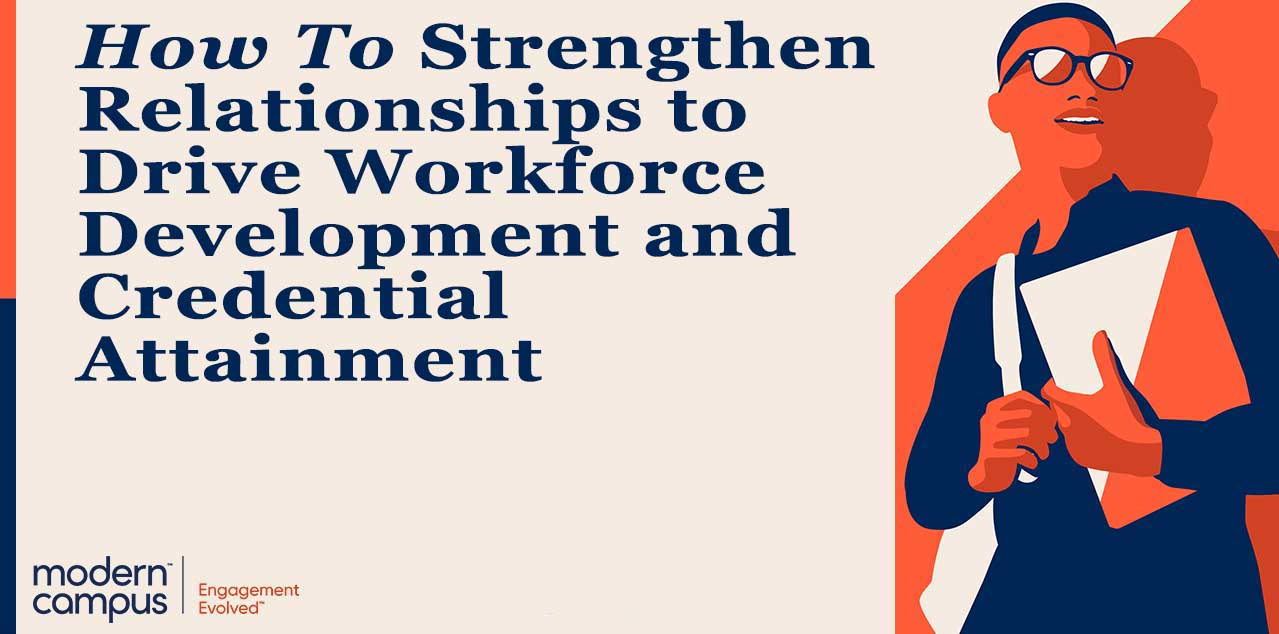Upskilling and Reskilling Central to Strengthening Texas’ Workforce
Across the United States, a race is on to ensure adults are earning the credentials they need to keep pace with a fast-changing labor market.
In Texas, this effort is especially critical as the state prepares for a post-pandemic labor market in transition. In 2015, Texas set an attainment target of 60% by 2030—the 60x30TX Initiative—to establish the state as one of the highest achieving in the country.
While Texas has made progress by increasing its attainment rate by 12% since 2014, there’s still work to be done. The state average attainment rate is 47.9%, which is well short of its target and below the national average.
What’s more, urban areas are lagging when it comes to adults attaining high-quality postsecondary credentials. Austin, San Antonio, Houston, El Paso and Dallas-Forth Worth all have attainment rates below 40%.
Serving Texas’ Workforce with Non-Credit Programming
Addressing this gap isn’t impossible. There are 2.5 million adults across Texas with some college education but no college credential, and 3.1 million adults who never progressed past earning a high school diploma.
This gap is reflected nationally too. The attainment rate across the United States is 51.9%, short of the 60% by 2025 goal set by the Lumina Foundation. Across the country, 27 million adults have some college education but no credential, and 37.9 million adults never progressed past earning a high school diploma.
This is where colleges and universities can lean on their colleagues in continuing, workforce and professional education divisions to make a difference.
These units are designed specifically to serve adult learners, and to extend access to college-level learning to folks who typically fly under the main campus’ radar. Their programs, services and processes are all designed with the student at the center, and their offerings are generally tailored to deliver ROI to learners who come through the door—namely in terms of positioning them to get great jobs.
“I see our portfolio in workforce and professional education really as a talent development and economic mobility for our community,” said Sammi Morrill, Associate Vice Chancellor of Operations, Economic and Workforce Development, for the Alamo Colleges District. “We can be more agile, and move to respond to labor market needs a little bit quicker.”
“Our mission is to move people out of poverty,” she added. “It's not just about the credential for us, it really is about getting someone to self-sustaining wages. That's the role I see us playing and the most essential for the 60x30TX attainment target.”
Lisa Kays, Senior Director of Professional Development at Southern Methodist University in Dallas, agreed.
“We are the bridge between academics and industry and the community,” she said. “Many of our academic leaders on campus are very well versed in best practices for staff development, and faculty development, teaching and research, but they may not be quite as connected to people working in their disciplines.”
“Within our campus, the continuing education division are really poised to be thought leaders and innovators. We can provide professional development and guidance to our colleagues about the changing needs of students and provide information about what employers are looking for.”
Workforce and Continuing Education Bridge the Skills Gap
According to Sallie Kay Janes, Associate Vice Chancellor of Continuing and Professional Development at San Jacinto College, workforce and continuing education divisions are most effective in creating these bridges to the labor market because they actively engage employers and industry to ensure programming is aligned with their needs.
“We've got to listen to industry, and then we also have to show industry that we've listened to them,” she said. “That's how we build our programs, because we want our graduates to have a job and a pathway to a career at the end. The only way we can do that is to listen to industry and do what the industry tells us to do.”
Janes added that for the college to truly have an impact on people’s ability to get a good job and advance into a sustainable career, it’s essential to offer a range of short-term programming that allows individuals to continue to return to the college for regular upskilling and reskilling aligned with their career pathway.
Of course, establishing an environment like this—and driving the kind of attainment needed to meet the 60% credential goal—requires programming and processes designed to serve the adult learner. This can be challenging in a traditional postsecondary environment, that is largely designed to bring in recent high school graduates and matriculate them through a structured two- or four-year program.
This design doesn't typically meet the needs of adult learners, who generally haven’t been in school for years (if not decades!), don’t necessarily understand the complicated bureaucracy of the postsecondary environment and have a range of other priorities—like work and family—competing for their limited time.
Workforce Development Technology Critical to Building Texas’ Workforce
Beyond ensuring that programs are designed to get students into jobs quickly, colleges and universities serving adults also need to ensure that processes are structured to meet the needs of this demographic. And for continuing and workforce education divisions, this is where they shine.
“The student can register at any time and can finish at any time,” said Janes, from San Jacinto College. “If we were working with the registration system that the credit side uses, we would never have that flexibility.”
Program management is most student-centric when institutions prioritize workforce development technology. It doesn't just benefit individual learners, according to Kays from SMU.: It also positions the institution to serve corporate clients who might be looking for very specific customized training offerings to make available to their employees.
“Students can look across our program offerings and see topics that might interest them and how they may fit together so that they can self bundle,” she said. “We can also take programs and courses from disparate programs and make packages for students, whether those are special populations of students that we work with for mission-driven outreach, or for corporate clients.”
Champion Non-Traditional Learners with Personalized Support
As colleges and universities begin to reorient themselves to create pathways for more adults to get the skills and credentials they need to access high-demand, high-wage fields across the labor market, it’s critical for continuing and workforce education divisions to lead the charge. And in order to meet this new role, these divisions need to be resourced and supported appropriately.
“We need to make sure that our student services, our ancillary services, our career services, and all of the support for adult students is tailored to their needs,” said Kays. “We can’t just retrofit something that's developed for a traditional residential undergrad to a student whose reality is very different.”
Fortunately, the state is making resources available for higher education institutions to retool and serve adult learners. Texas is allocating $94.6M toward emergency education relief, with $48.1M earmarked toward rapidly expanding capacity for high-demand and high-value education opportunities, and $4M earmarked toward outreach and engagement of adult learners. Additionally, $28.5 is targeted to accelerate enrollments for critical student populations.
Leaders need to ensure this funding is used to provide continuing and workforce education divisions the resources they need to bring more adults in the door and provide them the kind of holistic educational experience that will move them into high-paying jobs in high-growth careers.
“We are very focused on meeting labor market needs in our area,” added Morrill, from Alamo Colleges. “We have to invest in technology to meet industry need and track what we're doing in that talent development pipeline.”
How to Strengthen Relationships to Drive Workforce Development and Credential Attainment

Last updated: July 21, 2021



